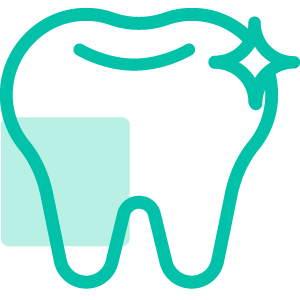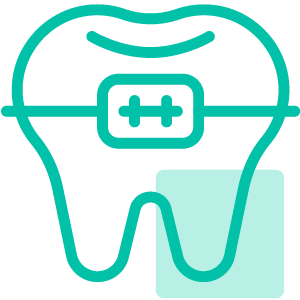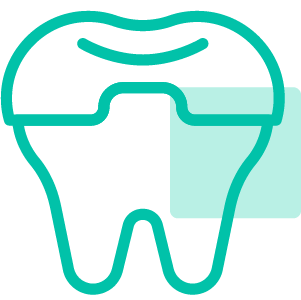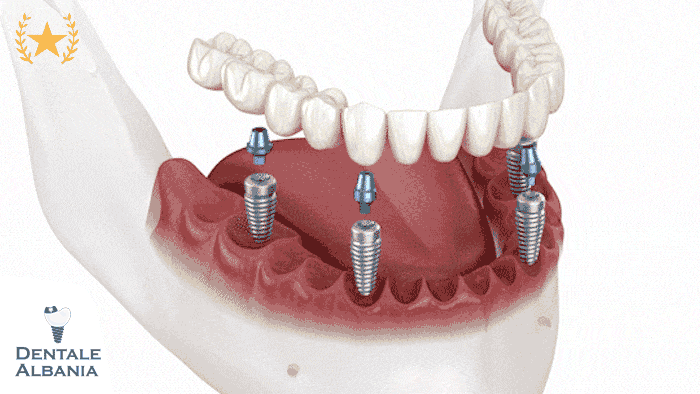
Table of Contents
ToggleWhat Are All on 4 Dental Implants and How Do They Work?
All on 4 dental implants provide a full-arch solution for individuals suffering from missing teeth, failing teeth, or severe dental issues. This advanced procedure offers a graftless, permanent solution using only four implants strategically placed in the jawbone. Unlike traditional dental implants, which may require bone grafting and multiple procedures, the All-on-4 treatment concept allows patients to receive fixed teeth in a single day.
How Does the All-on-4 Procedure Work?
- Four titanium implants are placed in the jawbone, with two positioned at an angle in the back to maximize bone support.
- A custom-made, fixed prosthetic bridge is attached on the same day of surgery, providing an immediate transformation.
- Over time, the implants integrate with the jawbone through a process called osseointegration, ensuring long-term stability and function.
What Are the Benefits of All-on-4 Dental Implants?
- Immediate Results: Patients leave the dental office with a new set of functional teeth on the same day.
- No Bone Grafting Needed: Ideal for individuals with jawbone loss, eliminating the need for additional procedures.
- Improved Oral Function: Restores the ability to eat, speak, and smile confidently without the discomfort of traditional dentures.
- Durability and Longevity: With proper care, All-on-4 dental implants can last for decades, offering a long-term tooth replacement solution.
How Long Do All-on-4 Dental Implants Last?
One of the most common questions about All-on-4 dental implants is their longevity. Since dental implants are a significant investment, patients want to ensure that they are making a long-term commitment to their oral health. Fortunately, All-on-4 dental implants are designed to be a permanent solution for missing teeth, offering durability and reliability when properly maintained.
How Successful Have All-on-4 Dental Implants Been?
- Clinical studies show that All-on-4 implants have a success rate of over 95% over ten years.
- The use of high-quality titanium implants ensures strong integration with the jawbone, preventing implant failure.
- Patients who follow their dentist’s recommendations for oral hygiene and regular check-ups experience longer-lasting results.
How Long Does It Take for All-on-4 Implants to Heal?
- Initial healing phase: Most patients experience mild discomfort and swelling for the first few days after the procedure.
- Osseointegration process: The implants gradually fuse with the jawbone over three to six months, ensuring long-term stability.
- Permanent prosthetic placement: Although a temporary bridge is provided on the same day, the final permanent teeth are attached after full healing.
What Is the Failure Rate of All-on-4 Dental Implants?
- Implant failure is rare, with a failure rate of less than 5% in properly selected candidates.
- Risk factors such as smoking, diabetes, or poor oral hygiene can increase the likelihood of failure.
- Regular dental visits and proper maintenance help prevent complications, ensuring the implants remain secure for decades.
Do All-on-4 Dental Implants Feel Like Real Teeth?
A major concern for many patients considering All-on-4 dental implants is whether they will feel natural. Since they replace a full arch of missing teeth, it’s essential that they not only look realistic but also provide the same comfort and functionality as natural teeth.
Do All-on-4 Look Real?
- All-on-4 dental implants are designed with high-quality materials like zirconia or acrylic, mimicking the natural color and translucency of real teeth.
- The shape and size of the teeth are customized to match the patient’s facial structure, ensuring a natural appearance.
- Unlike traditional dentures, these implants are fixed in place, eliminating any movement that may reveal them as artificial.
Do All-on-4 Feel Bulky?
- Initially, some patients report a slight adjustment period, as the bridge is slightly thicker than natural teeth to accommodate the implant structure.
- However, after a few weeks, most individuals adapt and feel that the implants function just like real teeth.
- Since All-on-4 implants are fixed, there’s no sensation of a foreign object, unlike removable dentures.
Can People Tell You Have All-on-4?
- The seamless integration of the prosthetic teeth with the gums ensures that most people cannot distinguish them from natural teeth.
- Custom shading and contouring enhance the realistic look, making them nearly indistinguishable from natural dentition.
- Unlike dentures, which may shift or show gum adhesives, All-on-4 implants stay securely in place, eliminating telltale signs of artificial teeth.
Do All-on-4 Have Fake Gums?
- Yes, the prosthetic bridge includes pink acrylic or ceramic gums, which mimic natural gum tissue.
- This design is necessary to achieve aesthetic harmony, especially for patients with gum recession.
- The artificial gums provide extra support and coverage, ensuring a smooth transition between the bridge and the natural gum line.
Ultimately, All-on-4 dental implants are crafted to feel and function like real teeth, allowing patients to eat, speak, and smile with full confidence.
Can You Eat Normally with All-on-4 Dental Implants?
One of the biggest advantages of All-on-4 dental implants is their ability to restore full chewing function, allowing patients to eat a wide variety of foods without worry. Unlike traditional dentures, which can shift and make eating difficult, All-on-4 implants are permanently secured to the jawbone, offering stability and strength similar to natural teeth.
Can You Eat Steak with All-on-4 Implants?
- Yes, All-on-4 dental implants allow you to eat steak and other tough foods, but a gradual adjustment period is recommended.
- Initially, patients should start with softer foods before transitioning to chewy or dense foods like steak to avoid discomfort.
- Once the implants have fully integrated with the jawbone, patients can enjoy nearly all types of food without restriction.
Can I Eat Anything with All-on-4 Implants?
- Over time, patients regain nearly 100% of their biting force, allowing them to eat hard, crunchy, and chewy foods.
- Unlike dentures, which require careful food selection, All-on-4 implants function just like natural teeth.
- Patients can eat foods such as nuts, apples, and crusty bread, as long as they maintain good oral hygiene and follow their dentist’s advice.
Does Food Get Under Implants?
- While food can get trapped under the prosthetic bridge, proper oral hygiene minimizes any discomfort or bacterial buildup.
- Daily rinsing, brushing, and flossing with specialized tools (like water flossers) can help keep the area clean.
- Regular dental checkups ensure that no food debris is causing irritation or infection.
What Can I Eat While I’m Having Dental Implant Treatment?
- In the first few weeks after All-on-4 surgery, patients are advised to follow a soft food diet to allow proper healing.
- Foods like mashed potatoes, yogurt, smoothies, scrambled eggs, and soft fish are ideal for recovery.
- Gradually, as the implants integrate with the jawbone, firmer foods can be reintroduced.
With All-on-4 implants, eating is comfortable and worry-free, helping patients regain their confidence while enjoying a varied diet.
How Painful Is the All-on-4 Procedure and Recovery Process?
One of the biggest concerns for patients considering All-on-4 dental implants is the level of pain associated with the procedure and the healing process. While any surgical procedure comes with some discomfort, the All-on-4 treatment is carefully designed to minimize pain and speed up recovery compared to traditional implants.
Is the All-on-4 Treatment Painful?
- During the procedure, patients experience little to no pain as it is performed under local anesthesia or IV sedation.
- Most patients report feeling pressure rather than pain while the implants are being placed.
- Some clinics offer sedation dentistry, which ensures that even anxious patients remain comfortable throughout the surgery.
How Painful Are All-on-4 Implants After Surgery?
- After the anesthesia wears off, patients may experience mild to moderate discomfort, similar to having a tooth extraction.
- Common post-surgical symptoms include:
- Swelling of the gums and face
- Mild bleeding
- Bruising around the jaw area
- General soreness in the mouth
- Pain peaks within the first 48 hours but is manageable with over-the-counter pain relievers like ibuprofen or prescribed medications.
How Long Does It Take for All-on-4 Implants to Heal?
- Initial healing occurs within 7-10 days, during which swelling and discomfort gradually subside.
- The full osseointegration process, where the titanium implants fuse with the jawbone, takes 3-6 months.
- During this time, patients must follow post-operative care instructions to ensure proper healing and avoid complications.
Is It Hard to Talk with All-on-4 Dental Implants?
- Some patients experience a short adjustment period where their speech might feel slightly different.
- Within a few days to a few weeks, most patients regain their normal speech patterns.
- Unlike dentures, which can slip and affect pronunciation, All-on-4 implants remain fixed, allowing for natural and clear speech.
What Not to Do When You Have Implants?
- Avoid smoking as it can slow healing and increase the risk of implant failure.
- Do not eat hard or sticky foods in the first few weeks post-surgery.
- Follow a proper oral hygiene routine to prevent infections or complications.
- Do not skip follow-up visits with your dentist, as they will monitor your healing and adjust your treatment plan if necessary.
The All-on-4 procedure is designed to minimize pain and maximize efficiency, making it a comfortable and effective solution for replacing missing teeth.
How Much Do All-on-4 Dental Implants Cost and Financing Options?

Cost is often a significant consideration for patients evaluating dental treatments. While All-on-4 dental implants involve a higher initial investment compared to conventional dentures, they offer superior durability, functionality, and aesthetics, making them a worthwhile long-term solution.
How Much Are All-on-4 Dental Implants?
- In the UK, the cost of All-on-4 dental implants typically starts around £9,995 per arch, though prices can vary significantly based on several factors:
- Geographic location of the dental practice (clinics in central London or Harley Street may charge higher fees).
- Expertise and reputation of the implantologist performing the procedure.
- Materials chosen for the prosthetic teeth—acrylic options are usually cheaper than premium porcelain or zirconia alternatives.
- Complexity of the individual case, such as the need for additional procedures or adjustments.
- On average, patients can expect to pay between £10,000 and £16,000 per arch for an all-inclusive treatment package, often covering:
- Initial consultation and diagnostics (3D X-rays, CT scans).
- Surgical implant placement.
- Immediate provisional teeth provided on the same day.
- Final permanent bridge fitted after the healing period.
- Follow-up visits and aftercare support.
How Much Are All-on-4 Dental Implants in Albania?
Albania has quickly become a popular destination for dental tourism, especially for procedures like All-on-4 dental implants, due to its combination of affordable pricing and high-quality dental care. Prices for All-on-4 dental implants in Albania typically range from €4,500 to €6,500 per arch, depending on the clinic, dentist experience, materials used, and any additional procedures required.
Cost Breakdown for All-on-4 Dental Implants in Albania:
-
Average Cost: The typical cost for an All-on-4 procedure in Albania is around €5,000 per arch. This includes consultation, 3D imaging scans, surgical placement of the four dental implants, and a temporary immediate prosthesis.
-
Permanent Prosthesis Costs: After healing (usually 4-6 months), the temporary prosthesis is replaced by a permanent high-quality zirconia or ceramic bridge. This final prosthetic typically adds around €1,000 to €2,000 to the initial cost, depending on the chosen material and clinic standards.
-
All-Inclusive Packages: Many Albanian dental clinics offer comprehensive packages that include consultations, implant placements, temporary and permanent prosthetics, follow-up care, and sometimes even accommodations and transportation, making the overall experience smooth and convenient for international patients.
Why Are All-on-4 Implants Cheaper in Albania?
-
Lower Operational Costs: Clinics in Albania have significantly lower overhead expenses (rent, salaries, supplies) compared to Western European countries, enabling them to offer competitive pricing.
-
Highly Competitive Market: Due to increased competition from numerous reputable dental clinics in major cities like Tirana, clinics maintain attractive pricing structures without compromising the quality of care.
-
Government Support & Regulations: Albania’s health regulations support medical tourism, helping clinics maintain international standards and lower prices simultaneously.
Are There Hidden Costs?
-
Most reputable clinics clearly outline their prices, with transparent packages ensuring no hidden costs. However, it’s crucial to confirm what exactly is included—such as sedation, temporary and final prostheses, aftercare, and follow-ups—before starting treatment.
Payment & Financing Options:
-
Many clinics offer flexible financing options and payment plans, although financing terms may differ for international patients.
-
Payments are often accepted in euros, pounds, or US dollars, and credit card payments are widely accepted, simplifying the financial transactions for foreign visitors.
Is It Worth Traveling to Albania for All-on-4 Implants?
Considering the significant savings (often 50-70% cheaper than the UK, Italy, or Germany), along with Albania’s highly skilled dentists, modern facilities, and beautiful travel experiences, traveling to Albania for All-on-4 dental implants can be a worthwhile investment for many international patients seeking high-quality yet affordable dental solutions.
Financing All-on-4 Implants: Payment Plans and Affordability
- Recognizing the financial commitment involved, many dental practices in the UK offer affordable monthly payment plans, with some packages available from as low as £78 per month.
- Many clinics provide attractive financing options, including:
- 0% APR interest-free financing spread over periods ranging from 6 to 24 months.
- Flexible credit terms that allow payments over 36 to 60 months, typically at a low-interest rate.
- All-inclusive treatment packages, bundling necessary consultations, procedures, accommodation, and even transportation, further enhancing patient affordability and convenience.
- Patients should carefully review financing offers to find one that best fits their budget, ensuring transparency with no hidden costs.
Why All-on-4 Dental Implants Are a Cost-Effective Long-term Investment
- Although initial costs may seem high, All-on-4 implants offer exceptional value when viewed over the long term:
- They eliminate the ongoing costs and inconveniences associated with traditional dentures, such as frequent replacements, relining, or adhesives.
- Their robust, permanent nature means they typically last for decades, offering a durable solution that seldom requires additional maintenance beyond standard oral care.
- By preserving jawbone health and preventing bone loss, All-on-4 implants minimize potential future dental expenses related to bone grafting or additional restorations.
Considering these points, investing in All-on-4 dental implants can ultimately lead to significant financial savings, improved quality of life, and long-term satisfaction for patients seeking an effective, permanent solution to tooth loss.
Am I Suitable for All-on-4 Dental Implants and Available Alternatives?
Before choosing All-on-4 dental implants, it’s crucial to understand whether you’re an ideal candidate. The success of this treatment depends heavily on your oral and overall health status, bone density, and specific dental conditions.
Who Is a Good Candidate for the All-on-4 Dental Implant Procedure?
- Ideal candidates for All-on-4 implants typically include those who:
- Have multiple missing teeth or are facing complete tooth loss in one or both arches.
- Struggle with loose-fitting or uncomfortable traditional dentures affecting speech, eating, or confidence.
- Experience advanced gum disease, causing teeth to become loose or fall out.
- Have significant jawbone loss, where traditional implants might require extensive bone grafting procedures.
- Want a permanent and durable solution for missing teeth that closely resembles natural teeth.
- Even patients previously considered unsuitable for implants due to low bone density can often benefit from All-on-4 implants, thanks to the angled positioning of the implants, optimizing existing bone strength and density.
What Are the Alternatives to All-on-4 Dental Implants?
While All-on-4 implants offer an excellent balance between quality, functionality, and affordability, they might not be the best fit for everyone. Here are some popular alternatives:
- All-on-6 or All-on-8 Dental Implants: Similar to the All-on-4 concept, these methods involve more implants (6 or 8), providing increased stability, especially beneficial for patients with higher bite forces or very low bone density.
- 3 on 6 Implants: This alternative uses three bridges supported by six implants, distributing the load more evenly and offering robust support. Often recommended when patients want to replace each individual tooth or segment separately, providing more flexibility and ease of maintenance.
- Conventional Dental Implants: These involve placing individual implants per missing tooth. While providing exceptional aesthetics and function, the procedure is more invasive, expensive, and may require extensive bone grafting and multiple surgeries.
- Traditional Dentures: Often more affordable initially, but come with significant disadvantages such as discomfort, decreased chewing capability, regular adjustments, and ongoing jawbone deterioration.
- Implant-Supported Dentures: Dentures attached to implants via ball-and-socket connectors or bars. This approach offers more stability than traditional dentures but still involves removable components that require regular cleaning and maintenance.
All-on-4 vs Dentures: Which Is the Better Choice?
When comparing All-on-4 implants vs dentures, consider these key points:
- Comfort and stability: All-on-4 implants provide superior comfort, as they’re permanently fixed in place, eliminating slippage and discomfort common with dentures.
- Bone preservation: Unlike dentures, which accelerate bone resorption, All-on-4 implants help preserve and maintain jawbone health.
- Aesthetics and confidence: All-on-4 dental implants closely resemble natural teeth in appearance, enhancing facial structure and significantly boosting patient confidence and self-esteem.
- Long-term cost-effectiveness: Though initially more costly, All-on-4 implants typically offer a better financial outcome due to minimal maintenance requirements compared to regular denture replacements.
How Do You Clean Under All-on-4 Dental Implants? Maintenance and Aftercare

Proper cleaning and maintenance of All-on-4 dental implants are critical to ensure their longevity, functionality, and aesthetics. One of the significant advantages of All-on-4 implants over removable dentures is their ease of cleaning and daily care—similar to natural teeth. However, specific cleaning techniques and regular maintenance routines are essential for preventing complications like infection, gum disease, or implant failure.
Daily Cleaning Practices for All-on-4 Implants
- Brushing: It is recommended to brush All-on-4 implants at least twice a day with a soft-bristled toothbrush. Special implant-friendly toothbrushes are available, designed to gently clean the implant and surrounding gums without damaging or irritating the tissues. Brushing thoroughly around and under the fixed prosthesis prevents plaque buildup and ensures your implants remain healthy.
- Flossing and interdental brushes: Regular dental floss may not adequately reach the areas beneath an All-on-4 prosthesis. Instead, using interdental brushes or specialized floss threaders helps effectively clean underneath and between implants. Regular use of these tools prevents food particles from accumulating under implants, reducing the risk of infection or gum inflammation.
- Water flossers: Water flossers or oral irrigators are particularly useful for patients with All-on-4 implants. They gently but effectively remove food debris and plaque from beneath the implants, helping maintain gum health and prevent bacterial growth. Incorporating a water flosser into your daily oral care routine greatly enhances the cleanliness and overall health of your implants.
Professional Maintenance and Check-Ups
- Routine dental visits: It’s crucial to attend regular dental check-ups every six months following the All-on-4 procedure. These appointments allow your dentist or hygienist to thoroughly clean beneath and around your implants, identify any early signs of problems, and ensure the prosthetic remains in optimal condition.
- Annual X-rays and implant checks: Annual dental X-rays are important to evaluate the bone health around your implants and monitor their integration and stability. Identifying any potential problems early significantly reduces the risk of complications or implant failure.
- Prosthetic evaluation and adjustments: Although the All-on-4 system is designed for permanence, occasional evaluations are necessary. Prosthetic adjustments, minor repairs, or replacements of the implant bridge due to normal wear may occasionally be needed to ensure ongoing comfort and functionality.
What Should You Avoid Doing When You Have Implants?
Maintaining healthy implants also involves avoiding certain habits and practices that could compromise your implants’ longevity and health. Patients should avoid:
- Smoking: Smoking increases the risk of implant failure significantly by reducing blood flow, impairing healing, and increasing infection risks.
- Chewing excessively hard foods: While All-on-4 implants restore normal chewing function, extremely hard foods (like ice or hard candies) could potentially damage or weaken the prosthetic.
- Grinding or clenching teeth: Patients who grind or clench should consider using a protective nightguard to avoid exerting excessive pressure on the implants, reducing the risk of damage or loosening.
How Many Teeth Are in All-on-4? Understanding Implant Structure
When considering All-on-4 dental implants, patients often wonder exactly how many teeth they will receive as part of the procedure. Understanding the structure and specifics of All-on-4 implants is essential for setting clear expectations about appearance, function, and overall outcomes.
How Many Teeth Do You Get with All-on-4?
- The All-on-4 treatment typically provides patients with a complete full-arch restoration, meaning you receive an entire upper or lower arch of teeth supported by just four strategically placed implants. Usually, each arch consists of 10 to 14 teeth, depending on individual anatomical conditions and specific patient requirements.
- A typical All-on-4 prosthesis is designed to replicate the function and aesthetics of a natural full set of teeth. The precise number of teeth can vary slightly, but most commonly, dentists aim for about 12 teeth per arch, balancing aesthetics, comfort, and optimal chewing functionality.
- The reason why fewer implants (just four) can securely support so many teeth is due to the unique design and placement technique of All-on-4 implants. By angling the rear implants, the All-on-4 method maximizes bone contact, enhancing stability and distributing biting force evenly across the jaw.
How Many Teeth Can an All-on-4 Implant Hold?
- Although only four implants anchor the entire set of teeth, these titanium posts are exceptionally strong and stable. Their angled positioning increases their strength and load-bearing capabilities, allowing them to comfortably support the complete set of replacement teeth.
- The All-on-4 implant structure is designed specifically to ensure long-term reliability. This advanced implant arrangement helps patients regain nearly 100% of their natural biting and chewing capabilities, allowing them to enjoy foods they may have struggled with previously, like steak, crunchy vegetables, or even sticky foods.
- With proper care and routine dental check-ups, the All-on-4 implants can successfully support a full arch of replacement teeth for decades, significantly enhancing quality of life.
Are There Fake Gums on All-on-4 Implants?
- An important part of the All-on-4 prosthetic structure is the inclusion of artificial gums. These “fake gums” are carefully crafted from high-quality acrylic or porcelain materials, designed to seamlessly blend in with your natural gums and enhance overall aesthetics.
- Artificial gums help create a more natural appearance, especially for patients who experienced significant gum recession or bone loss prior to treatment. They contribute not only to aesthetics but also support the stability of the prosthetic teeth, ensuring that the implants and artificial teeth integrate smoothly with the surrounding oral tissues.
- The design and shade of artificial gums are customized for each patient, ensuring the prosthetic blends harmoniously with their overall appearance, delivering a realistic and aesthetically pleasing result.
Can All-on-4 Implants Be Removed or Adjusted? Understanding Removability and Maintenance
When considering All-on-4 dental implants, it’s natural for patients to question the long-term practicality, including whether these implants can be removed, adjusted, or repaired if necessary. Understanding these factors is crucial to maintaining a successful and satisfying dental restoration.
Can All-on-4 Implants Be Removed?
- All-on-4 implants are designed as a fixed solution, permanently secured into the jawbone, which means they aren’t intended to be frequently removed like traditional dentures. However, in specific circumstances, such as prosthetic damage, implant infection, or severe implant failure, a dental specialist can remove or adjust the implants surgically.
- The removal process is complex, as implants are fused directly into the jawbone through a process called osseointegration. If removal becomes necessary, it requires careful surgical intervention to prevent damage to surrounding bone and gum tissue.
- Routine maintenance or adjustments typically do not involve removing the implants themselves; rather, the prosthetic bridge (the set of artificial teeth) attached to the implants may be periodically removed or adjusted by the dentist for cleaning, minor repairs, or upgrades.
Do All-on-4 Implants Need Adjustments?
- While the implants themselves rarely need adjustment after healing, the prosthetic teeth (bridge) may require occasional adjustments or maintenance checks. Regular dental visits ensure that the prosthetic teeth remain comfortable, secure, and functional over time.
- Adjustments might include correcting bite alignment, reshaping prosthetic teeth for improved comfort, or tightening screws to maintain stability. These minor adjustments are part of standard ongoing dental care and can help prevent more significant issues down the line.
- Additionally, the prosthetic teeth will naturally wear over time due to regular biting and chewing. After several years (typically 10-15 years or longer), replacement of the prosthetic teeth may be advised to maintain optimal aesthetics and functionality.
What Happens if an All-on-4 Implant Fails?
- Implant failure is rare but can occur, especially if proper oral hygiene is neglected, or if the patient develops underlying health issues like severe gum disease or uncontrolled diabetes. Symptoms of implant failure include looseness, persistent pain or swelling, or noticeable discomfort around the implant site.
- If an All-on-4 implant does fail, immediate attention from a dental specialist is required. Treatment typically involves removing the compromised implant, allowing the site to heal, and then placing a new implant if possible. Sometimes additional procedures, such as bone grafting, may be necessary if bone density has been affected.
- The key to minimizing the risk of implant failure is diligent oral care and regular dental check-ups. Early detection of any issues can often allow for minor adjustments or treatments, significantly reducing the likelihood of implant loss.
The All-on-4 Dental Implants Treatment Process: What to Expect Step-by-Step

The treatment process for All-on-4 dental implants is carefully structured to provide a seamless and comfortable experience from start to finish. Understanding the steps involved can help you feel more confident and prepared as you embark on your journey to restoring your smile and dental functionality.
Initial Consultation and Eligibility Assessment
- Your journey to a new smile with All-on-4 implants begins with a detailed initial consultation. During this session, the dentist or implant specialist will thoroughly examine your oral health, including checking your gum health and assessing your bone density through advanced imaging such as 3D CT scans.
- Eligibility criteria for All-on-4 implants will be discussed at this stage, determining if you’re a suitable candidate for the procedure. Factors like jawbone density, overall health, lifestyle habits (such as smoking), and any underlying conditions like diabetes or gum disease will be considered.
- This consultation also allows you to ask essential questions about the procedure, costs, recovery process, and financing options, ensuring that you make an informed decision before proceeding.
Surgical Procedure Day: Receiving Your New Teeth in One Day
- On the day of your All-on-4 implant surgery, you’ll receive local anaesthesia, with optional sedation to ensure complete comfort throughout the process. Any remaining failing teeth will first be extracted, preparing your mouth for the implant placement.
- Four precisely placed titanium implants will then be strategically inserted into your jawbone. Two implants are typically placed vertically at the front of the jaw, where bone density is highest, while the other two are angled toward the back to maximize stability and avoid areas with limited bone density.
- Following the implant placement, a temporary, custom-designed dental bridge or prosthesis is securely attached to the implants. This immediate restoration means you can leave the dental office with a fully functional set of teeth—hence the popular term “Teeth in a Day.”
Healing and Osseointegration Period
- After your implants are placed, a critical phase of healing called osseointegration occurs. During this period, typically lasting from three to six months, the titanium implants gradually fuse with your jawbone, creating a stable and durable foundation for your permanent teeth.
- Throughout the healing process, regular follow-up appointments with your dentist will be scheduled to monitor your progress, ensure proper healing, and make any necessary adjustments to your temporary prosthesis.
- Proper aftercare during this time is essential. You’ll be provided detailed instructions regarding diet, hygiene practices, and activities to avoid, ensuring that your implants heal effectively and securely.
Final Prosthetic Placement: Your Permanent Teeth
- Once your implants have fully integrated with your jawbone, your temporary prosthesis will be replaced with a permanent, meticulously crafted dental bridge made from high-quality materials, such as zirconia or porcelain, designed to resemble your natural teeth closely.
- The permanent prosthesis not only provides excellent aesthetic results but also significantly enhances your bite, chewing ability, and speech, fully restoring your oral functions.
- After receiving your permanent All-on-4 implants, ongoing maintenance appointments and regular dental check-ups are crucial to maintaining long-term implant success and optimal oral health.
Frequently Asked Questions About ‘All on 4 dental implants’
How long do All-on-4 dental implants last?
All-on-4 dental implants offer remarkable longevity, typically lasting 20 years or more when cared for properly. Several factors influence their durability, including oral hygiene, routine dental check-ups, and lifestyle habits. Regular professional cleanings and diligent at-home care can help prolong the life of your implants, preventing common complications such as gum inflammation or peri-implantitis, which can lead to implant failure. With the right approach, All-on-4 implants are considered a permanent solution for tooth replacement, providing patients with a stable, aesthetically pleasing, and highly functional smile for decades.
How much do All-on-4 dental implants cost?
The cost of All-on-4 dental implants in the UK typically ranges between £9,995 and £14,000 per arch, depending on several factors such as clinic location, the complexity of the individual case, the materials selected for the final prosthesis, and whether additional procedures, like bone grafting or sinus lifts, are necessary. Clinics commonly offer financing options, including interest-free payment plans, allowing patients to spread payments over time, making this advanced dental solution accessible to a broader range of people. While the initial investment may seem significant, the long-term benefits of enhanced comfort, functionality, and quality of life make All-on-4 implants a cost-effective alternative compared to the ongoing costs associated with traditional dentures or single tooth implants.
Treatment Process and Consultation for All on 4 Dental Implants
The decision to opt for All-on-4 dental implants begins with a comprehensive consultation to evaluate your oral health and determine your eligibility. During this initial meeting, your dentist will conduct a detailed examination, which usually includes digital X-rays or advanced 3D imaging like CBCT scans. These diagnostic tools help to assess the amount and quality of your jawbone, identify the best positions for implant placement, and detect any underlying issues, such as gum disease, that must be treated prior to surgery.
How do I know my eligibility for All-on-4 or 6 implants?
Not everyone is a suitable candidate for All-on-4 implants, making a thorough assessment essential. Ideal candidates typically include patients experiencing extensive tooth loss, those struggling with ill-fitting dentures, or individuals with severely decayed or failing teeth requiring extraction. Good candidates generally have adequate overall health and sufficient jawbone density to anchor the implants effectively. However, one significant advantage of the All-on-4 method is its ability to accommodate patients with moderate bone loss without extensive grafting. Smokers, diabetics, or those with compromised immune systems will be carefully evaluated, as these conditions can influence implant healing and integration.
All-on-4 Dental Implants Procedure – Step By Step
Once eligibility is confirmed, the All-on-4 procedure can be summarized in a few clear steps:
- Initial preparation: This includes removal of any remaining damaged or decayed teeth and the management of gum health. Depending on individual circumstances, treatments to reduce inflammation or infection may be necessary prior to the implants’ placement.
- Implant placement surgery: On the day of surgery, patients typically receive sedation to ensure comfort. The dentist precisely inserts four strategically angled titanium implants into the jawbone. Two implants are positioned vertically at the front of the jaw, where bone density is highest, and two are angled at approximately 45 degrees toward the back of the jaw, maximizing stability and support.
- Immediate prosthesis attachment: One of the major advantages of All-on-4 implants is the immediate placement of a temporary bridge, meaning patients leave the dental practice with functional and aesthetically pleasing teeth on the same day.
- Healing and integration period: Over the following 3-6 months, osseointegration occurs—a biological process during which implants fuse securely with the jawbone. During this time, it’s important to follow care instructions carefully and attend regular follow-up appointments.
- Final prosthesis placement: After successful osseointegration, the temporary prosthesis is replaced by a customized, permanent dental bridge crafted from high-quality materials such as porcelain or zirconia, providing superior aesthetics and durability.
Following this structured process, All-on-4 implants allow patients to regain their confidence, restore full chewing capability, and significantly enhance their overall quality of life.
How long do All-on-4 dental implants last?

All-on-4 dental implants are renowned for their impressive longevity, often lasting decades or even a lifetime with proper care and maintenance. Clinical studies have shown a remarkable success rate, with implants remaining functional and stable for over 20 years in many cases. The lifespan of All-on-4 implants heavily depends on several factors, including oral hygiene habits, regular dental check-ups, the patient’s overall health, and lifestyle choices. Regular brushing, flossing, and professional dental cleanings help preserve implant health, prevent gum disease, and maintain the stability of the implants. Conversely, neglecting oral hygiene, smoking, or having uncontrolled chronic illnesses like diabetes can significantly reduce implant lifespan. Regular dental follow-ups every six months are highly recommended to ensure the continued success of the implants. During these visits, the dentist will assess the health of the implants and surrounding gums, making necessary adjustments or interventions if required. Ultimately, with excellent care, patients can confidently expect their All-on-4 implants to remain a robust, reliable solution for many years, providing both aesthetic and functional satisfaction.
Can I eat normally with All-on-4 dental implants?
One of the greatest benefits of All-on-4 dental implants is their ability to restore full chewing and eating capabilities, closely replicating the function of natural teeth. Unlike removable dentures, All-on-4 implants are fixed securely into the jawbone, offering exceptional stability and strength. This allows patients to comfortably eat a wide range of foods, including tough items like steak, crunchy vegetables, and chewy snacks—foods typically challenging or uncomfortable for traditional denture wearers. The implants evenly distribute bite forces across the jaw, ensuring comfort and confidence during eating without the fear of slippage or discomfort. However, during the initial healing phase immediately following surgery, a softer diet is recommended to prevent unnecessary pressure on the implants. After osseointegration—the critical healing process in which the implants fuse with the jawbone—patients can gradually reintroduce harder, chewier foods into their diet. Furthermore, because All-on-4 implants lack the palate-covering feature of conventional dentures, patients enjoy improved taste sensation, which greatly enhances their eating experience. In summary, All-on-4 implants not only restore normal eating ability but significantly enhance the quality of life by allowing individuals to enjoy their favorite meals with confidence and ease.
Cost and Financing of All-on-4 Dental Implants: What Should You Expect to Pay?
One of the critical factors patients consider when opting for All-on-4 dental implants is the associated cost. Understandably, potential implant candidates want clear and transparent information about what they might expect to pay. The cost of dental implants for All-on-4 can vary significantly depending on several key factors, including the location of the dental clinic, the experience of the dental surgeon, and the quality of materials used for both implants and the prosthetic teeth.
Typically, in the UK, the cost for All-on-4 dental implants starts from around £9,995 per arch. However, some clinics offer competitive financing options, allowing payments starting from as low as £78 per month, making the treatment more accessible and affordable for a broader range of patients. Higher-end packages, which may include premium materials, state-of-the-art guided surgery, overnight stays, dedicated treatment coordinators, and comprehensive aftercare, can range up to approximately £14,595 per arch.
An attractive feature for many considering this treatment is that many reputable dental practices now offer up to 0% APR finance plans. These financing options mean patients can spread payments over a longer period without the stress of interest charges, significantly reducing upfront financial burdens. This affordability factor has been a crucial contributor to the popularity and accessibility of All-on-4 implants in recent years.
Moreover, despite the seemingly high initial investment, All-on-4 dental implants are often considered cost-effective in the long run. Unlike traditional dentures, which require ongoing maintenance, relining, or complete replacements every few years, All-on-4 implants are a permanent solution. Their durability and longevity substantially reduce long-term dental costs.
Patients considering this treatment are encouraged to engage with clinics offering a free consultation, where exact costs tailored to their individual cases can be outlined clearly. During these consultations, patients can also learn more about financing options, understand precisely what is included in the quoted price, and plan accordingly to regain a fully restored smile confidently.









